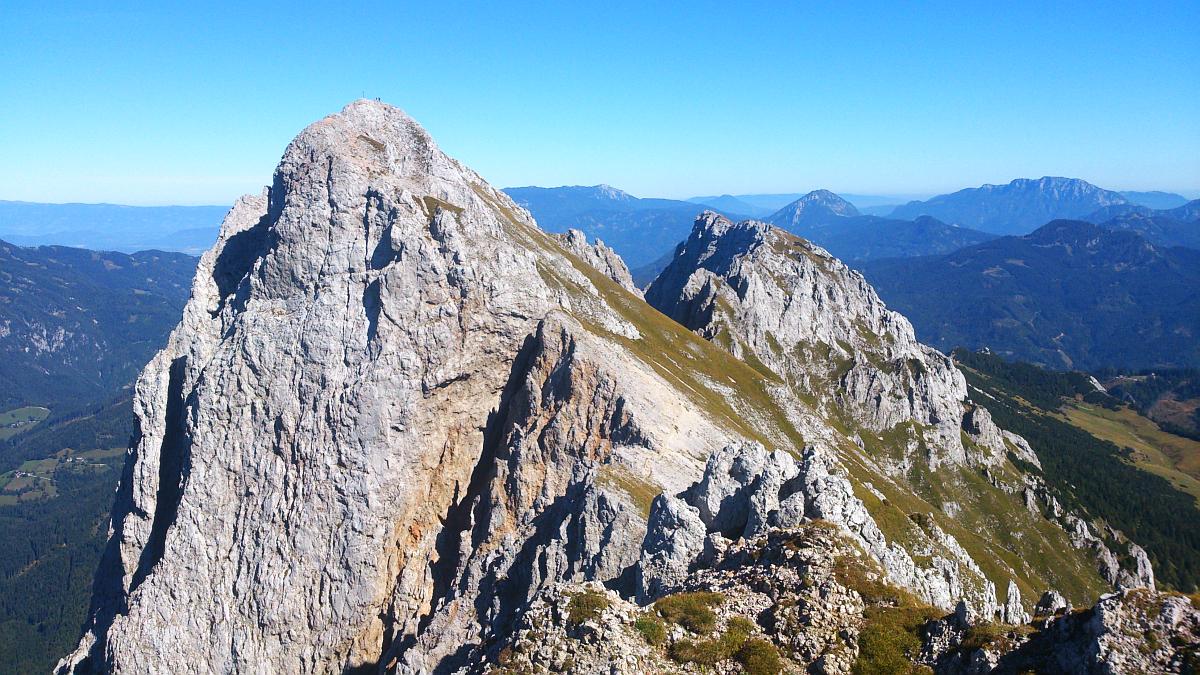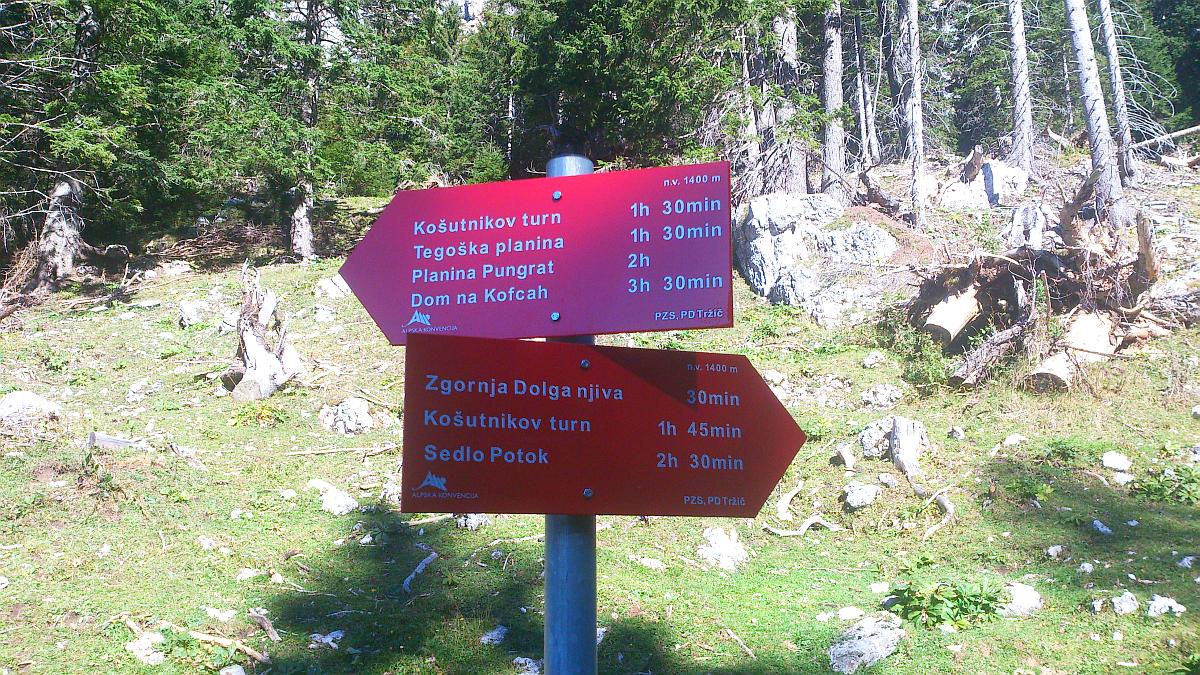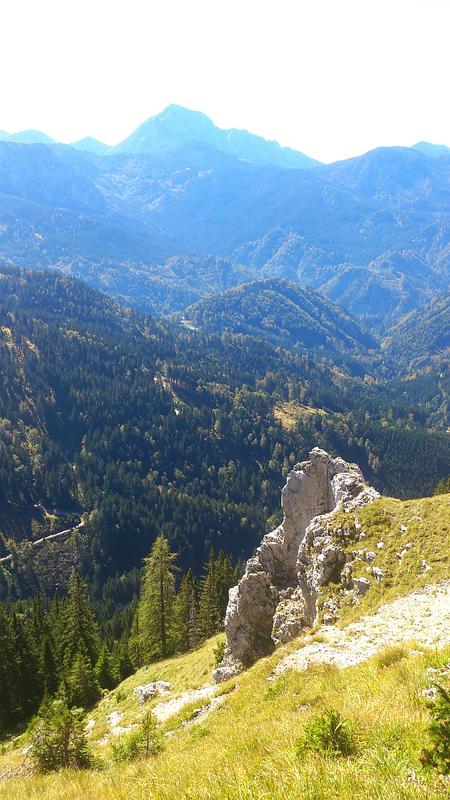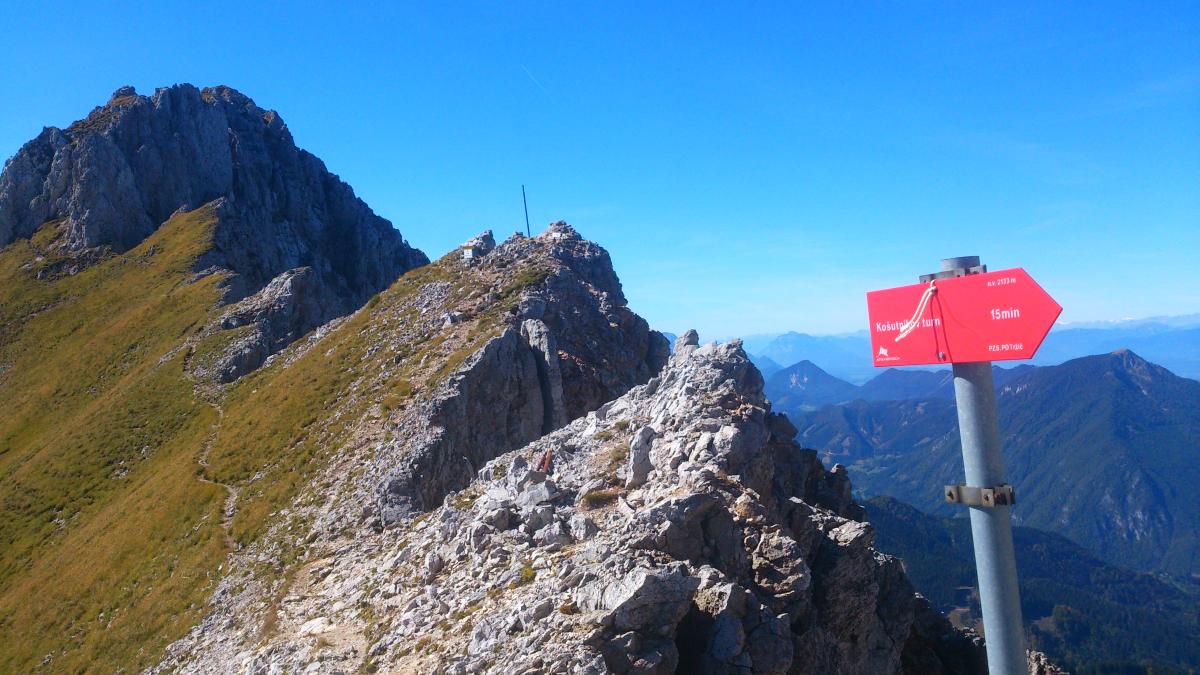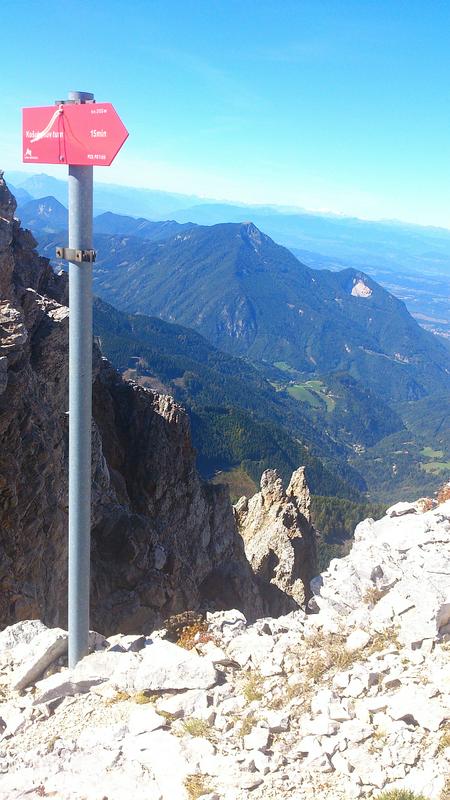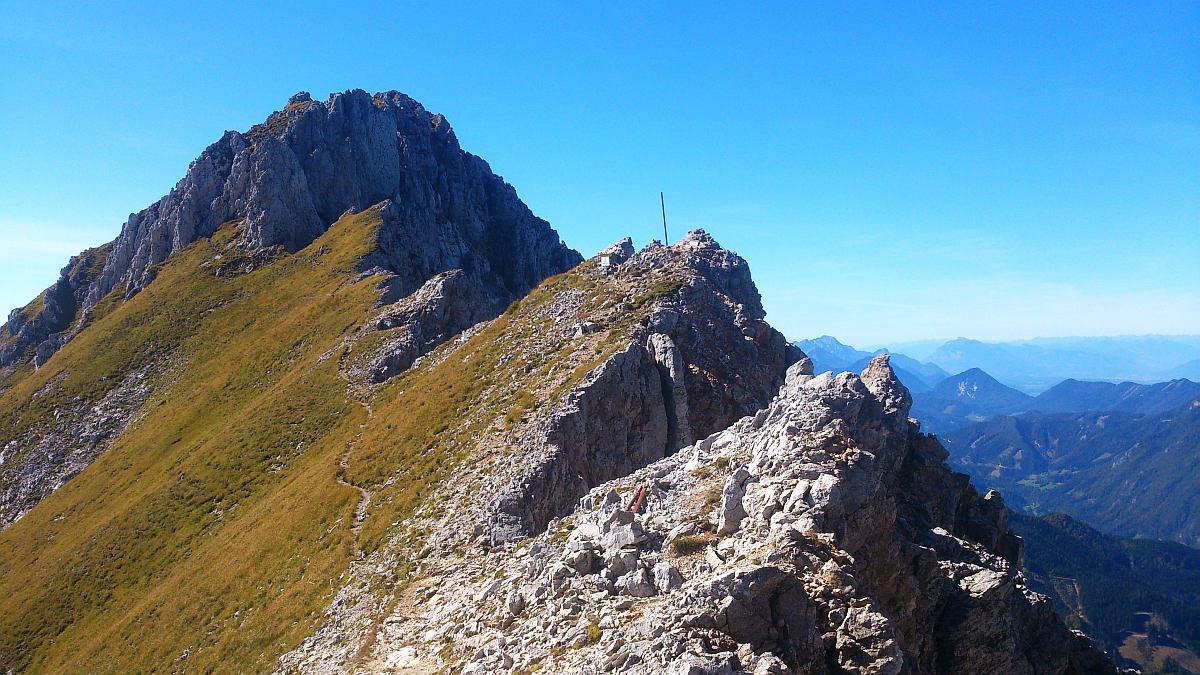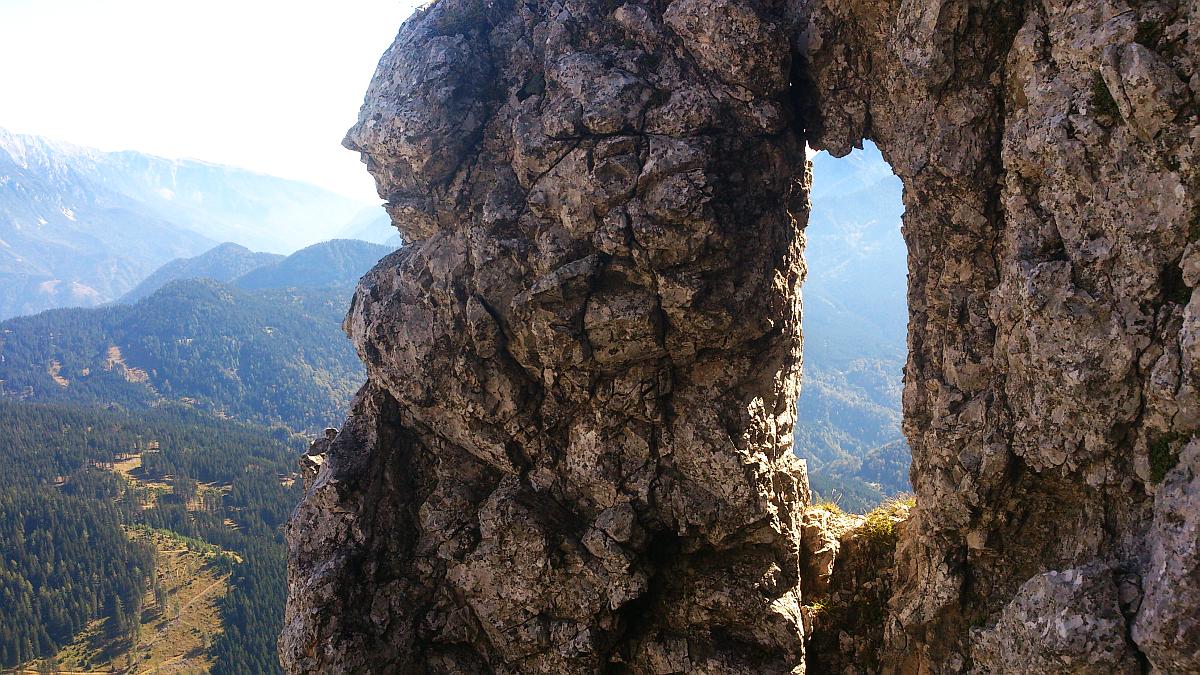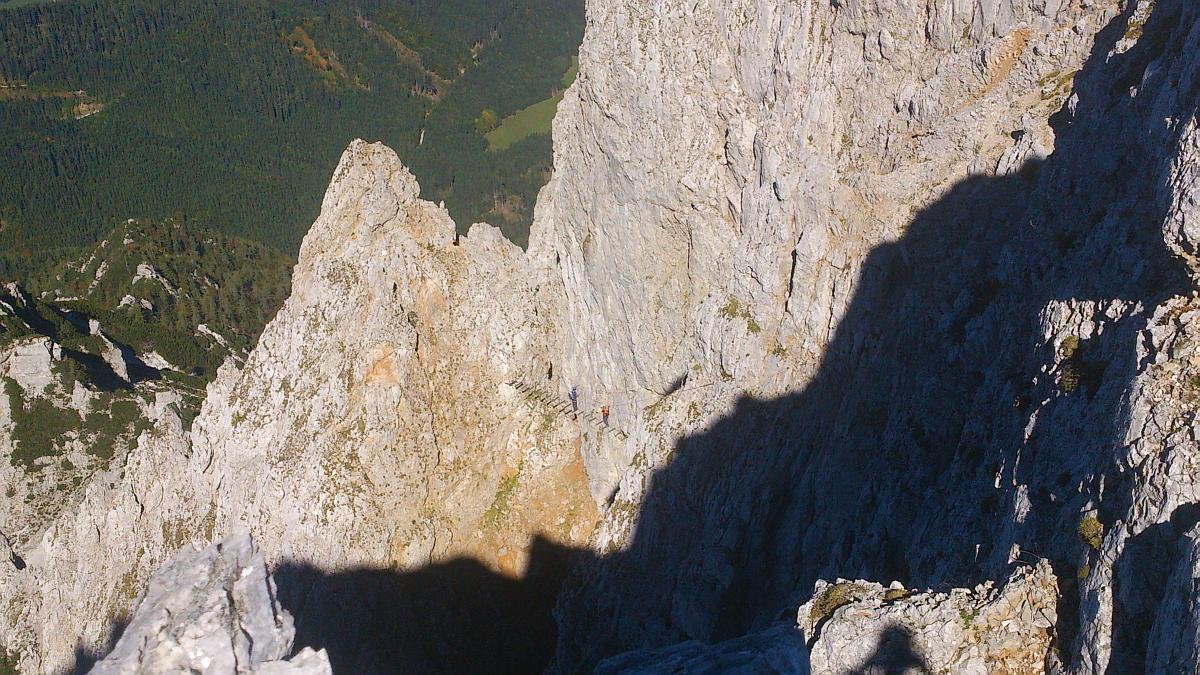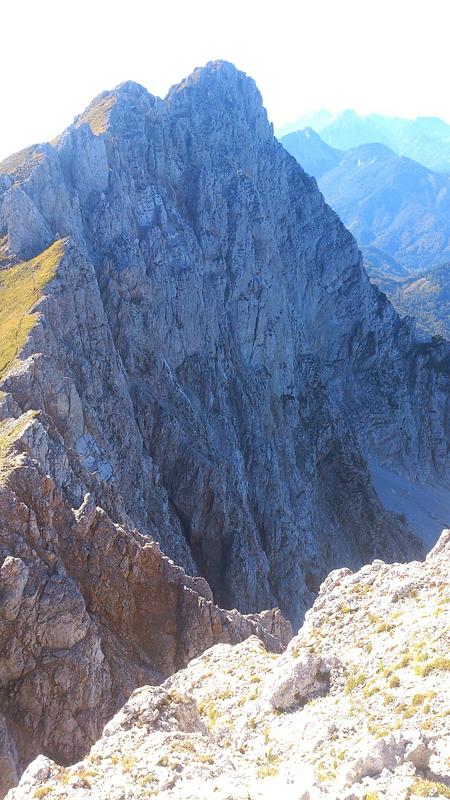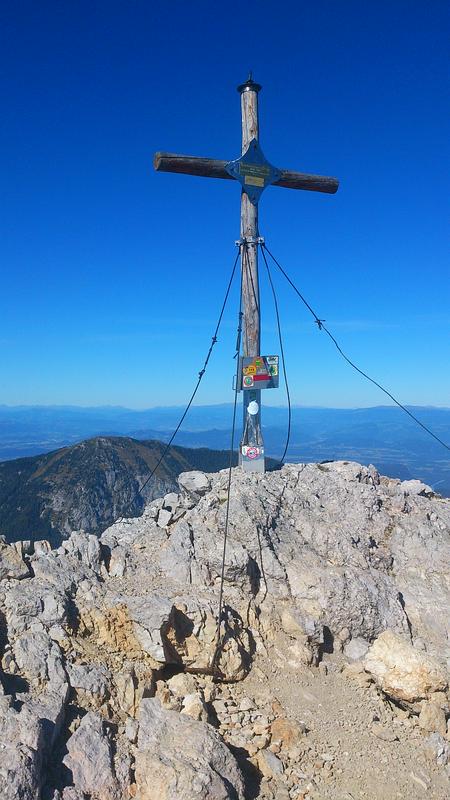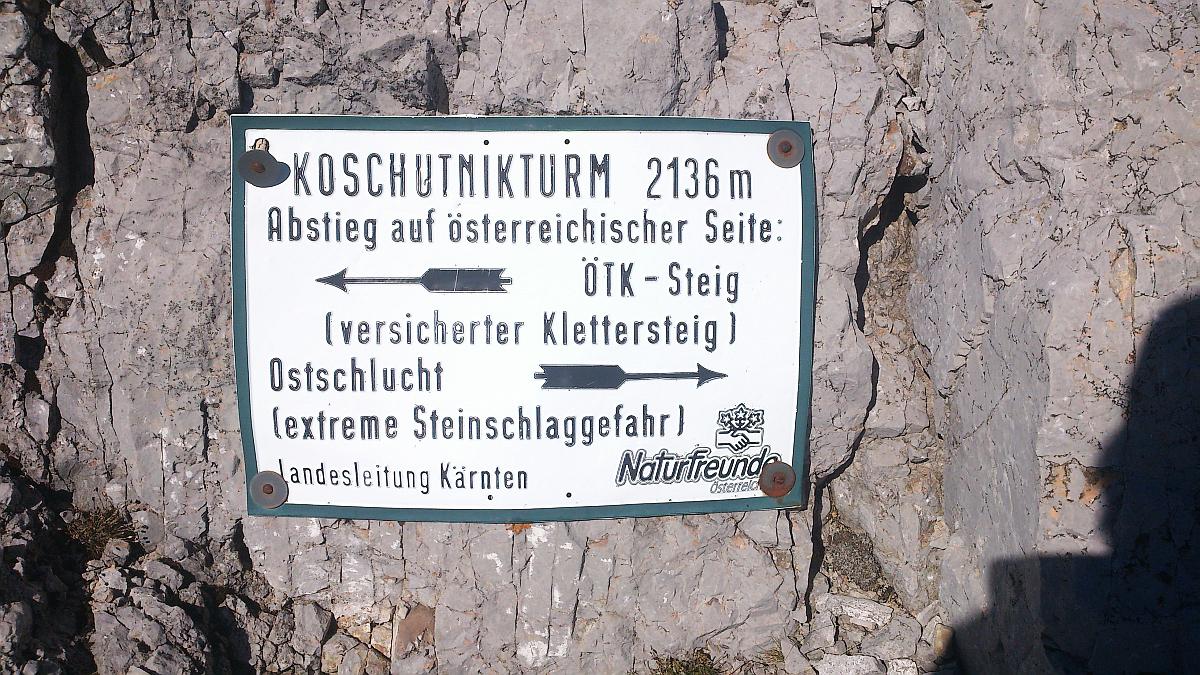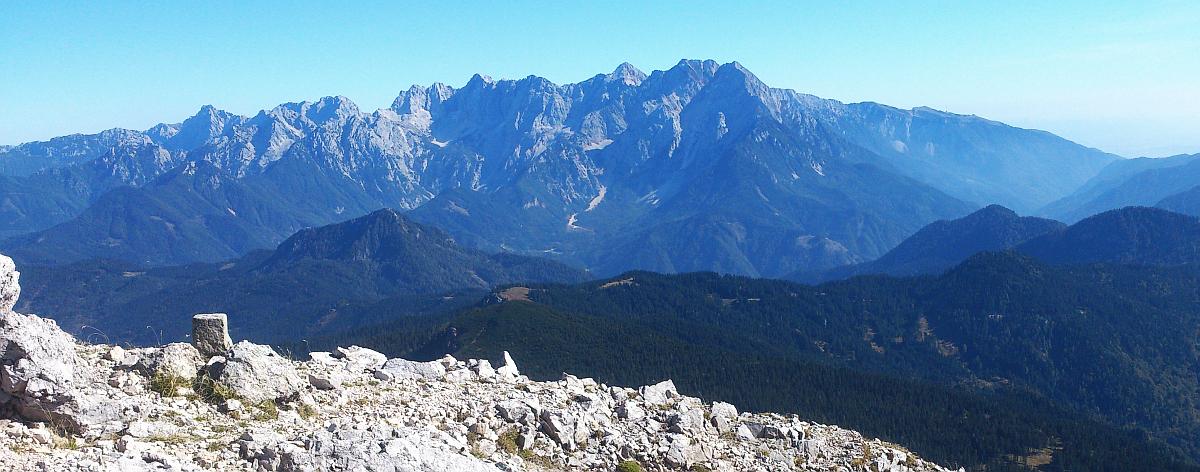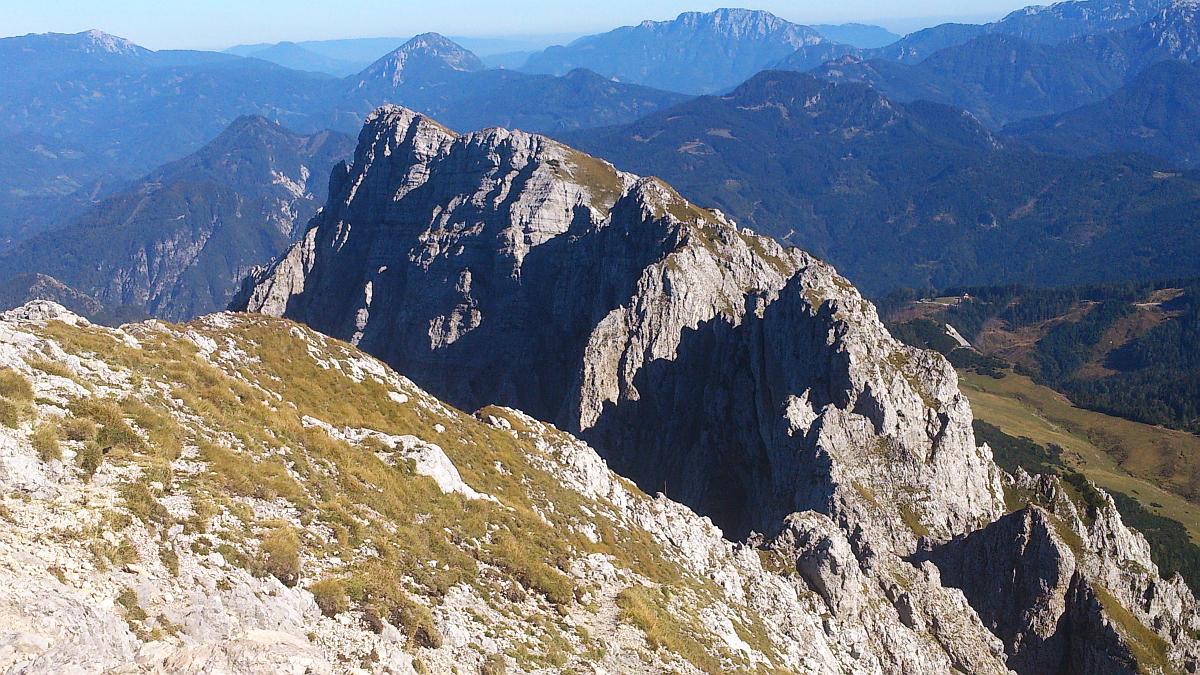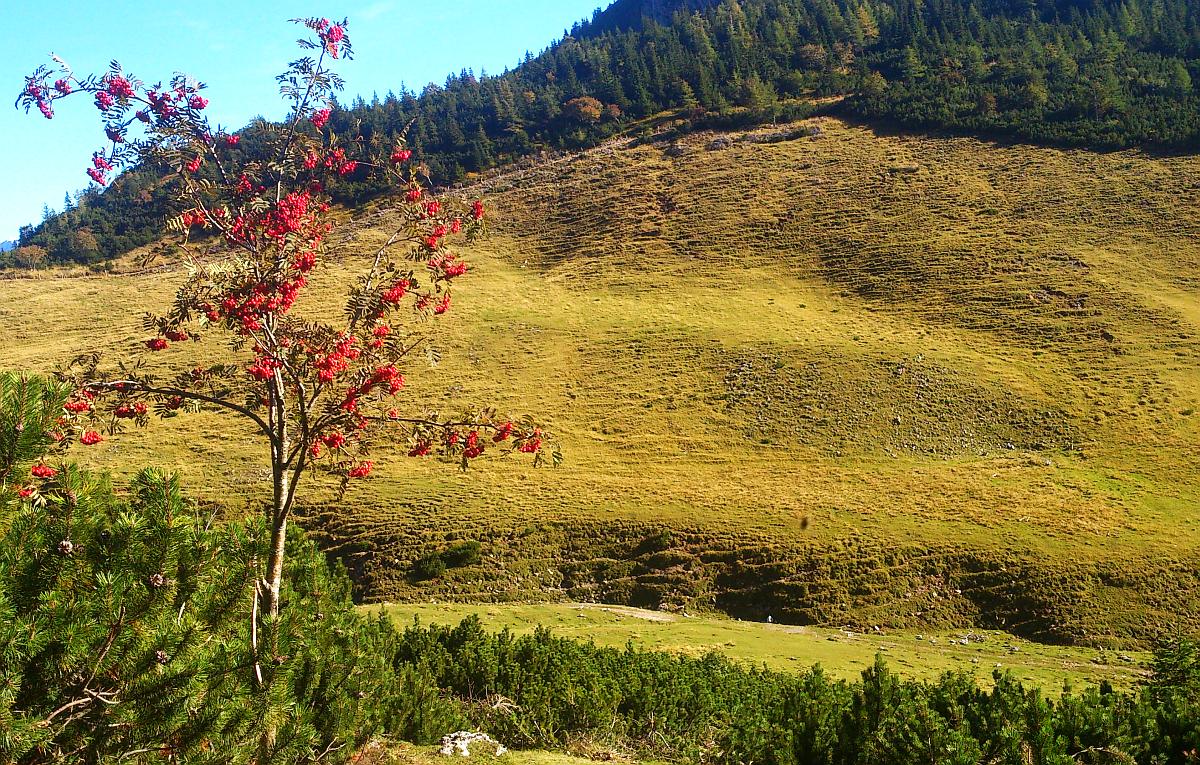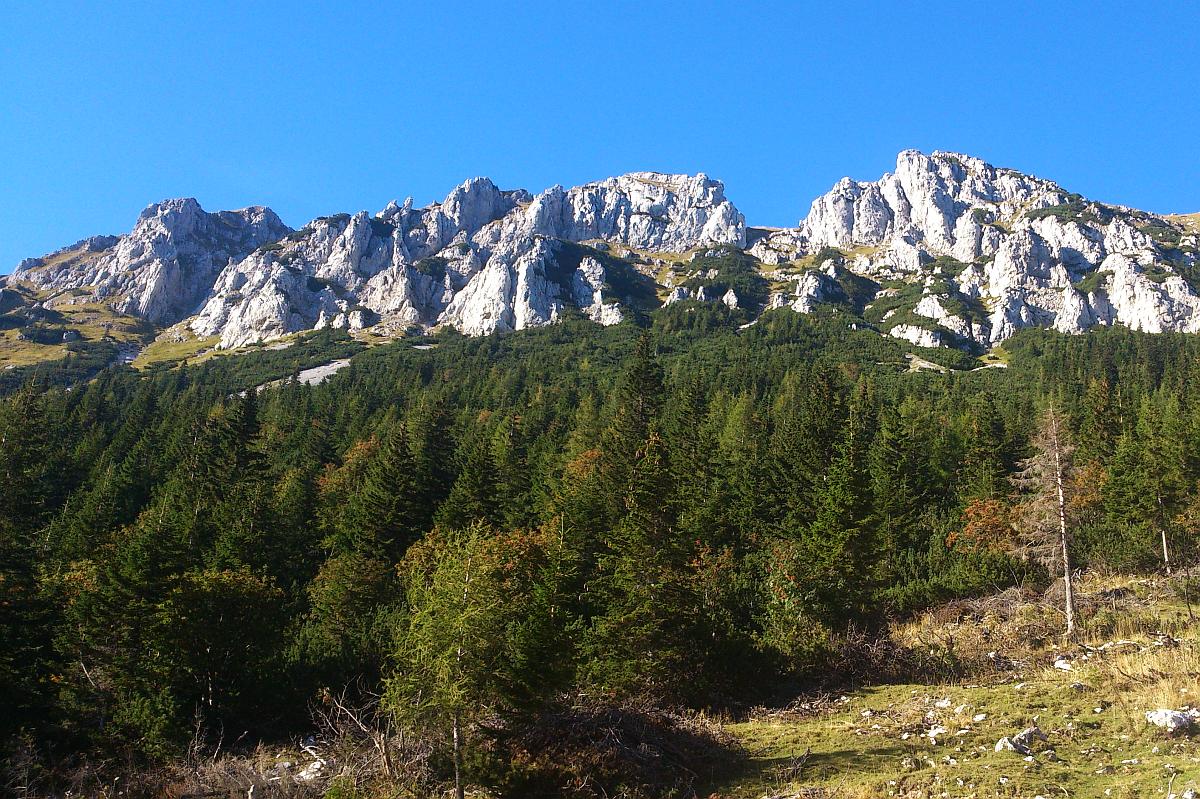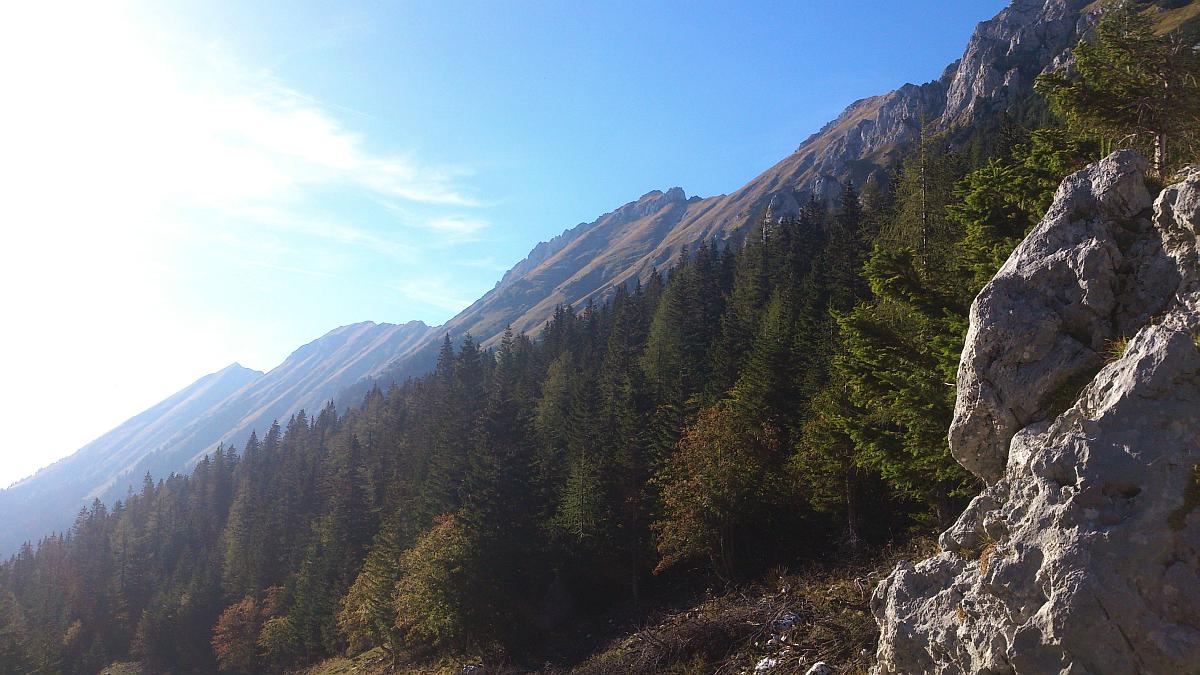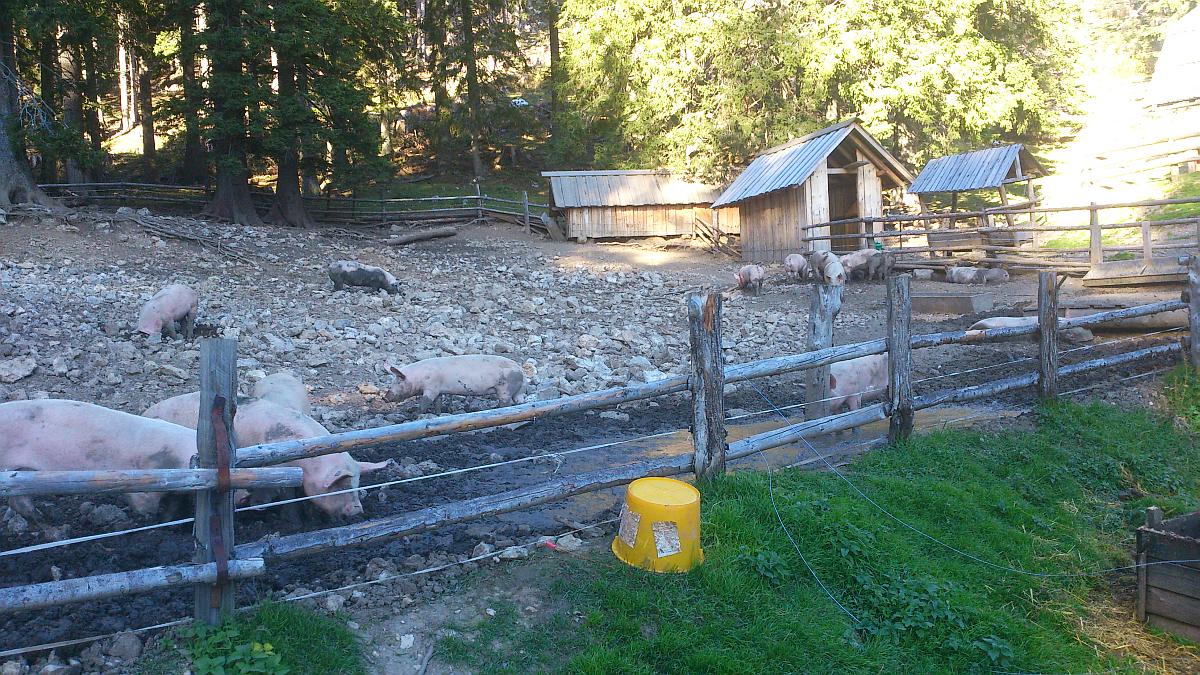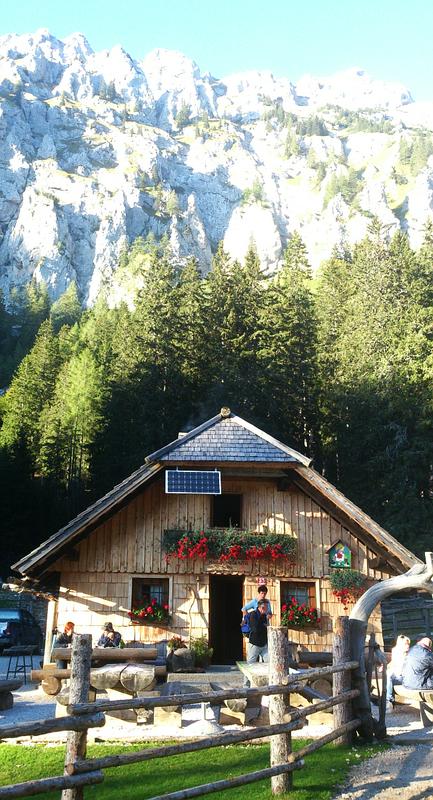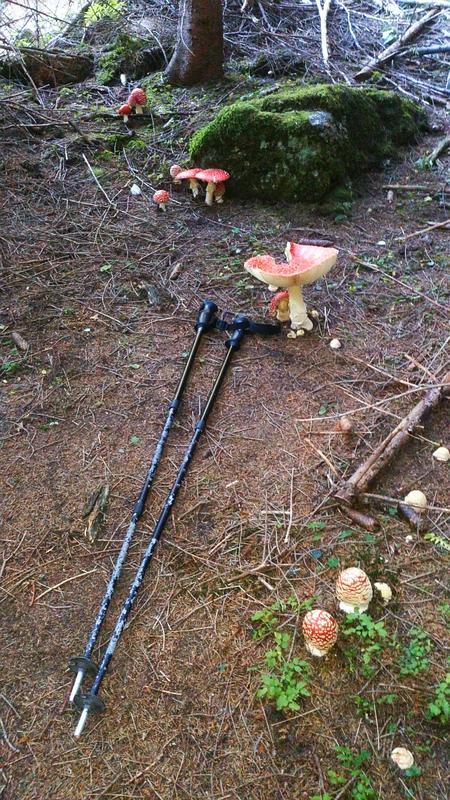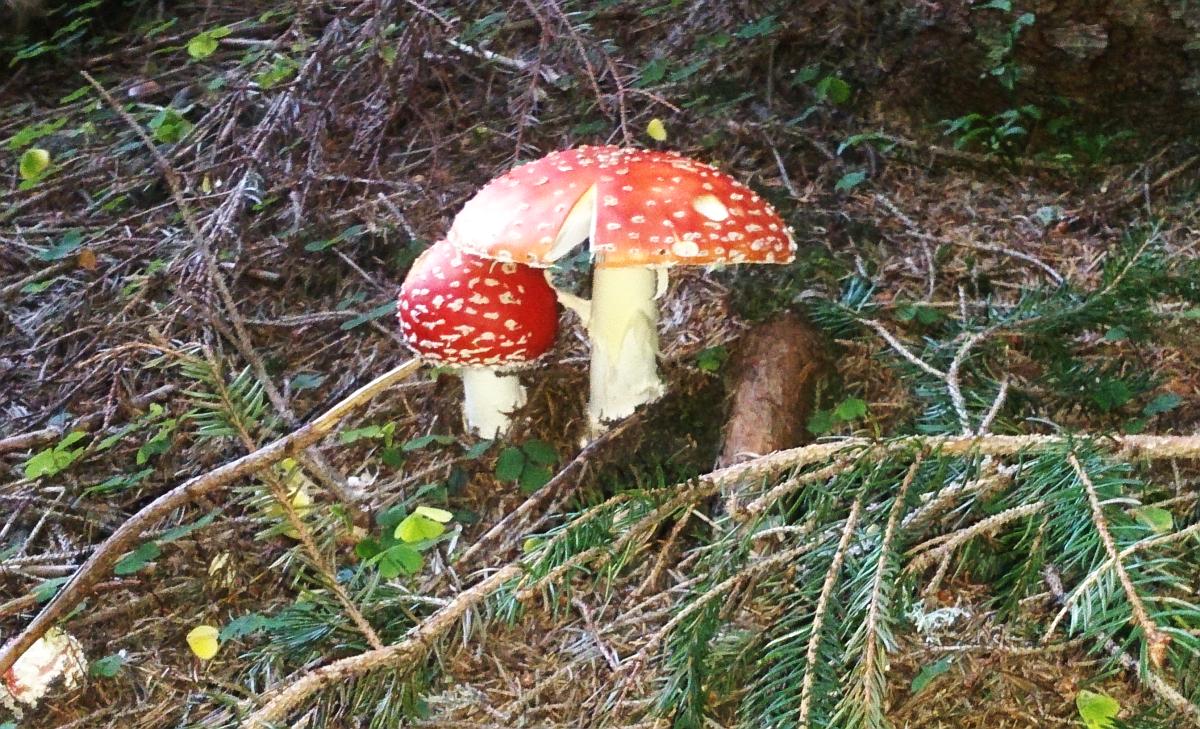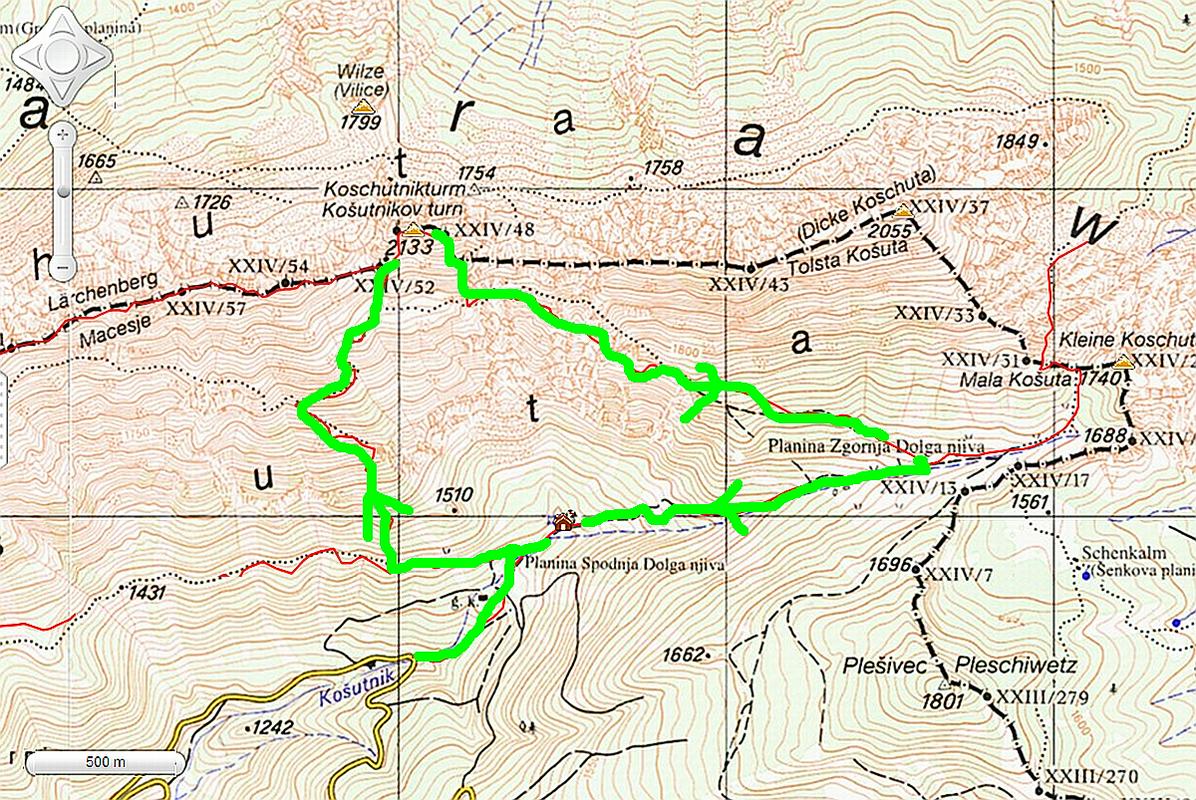
We started from Tržič, followed the Dovžan gorge through tunnels to the villages Jelendol and Medvodje, the onetime dwelling of the Born family who used this region as their hunting ground and for relaxation, and for exploiting forests. They used to own a whole third of the present municipality of Tržič. During the Second World War they were expropriated because of their Jewish roots, and confined. Karl Born didn't survive Mauthausen. In the denationalisation procedure in 2007 the forests were returned to the descendants of the last owner, Karl Born.
In Medvodje the asphalt road ends. The road leading to the foothills of Košutnikov turn, the penultimate and highest summit of the 12 kilometres long ridge of Košuta, is good at first, but then deteriorates.
From the car park at the quarry we head towards the shepherd's hut at the mountain Planina Spodnja dolga njiva, where the road splits into a western and an eastern trail to Košutnikov turn. We advise you to take the first one for ascent, and the second one for descent. For the ascent you should need 2,5 hours, regardless of the chosen trail, and for the descent about one hour less. The hike from the mountain pass to Ostrv shouldn't take more than 10 minutes.
At your return to the hut you will be received by friendly staff, and you will enjoy a small zoo (pigs, cows, turkeys, chicken, rabbits) and huge rolled dumplings. However, in autumn and winter the hut is closed.
Košuta and the Karavanke mountains are the most tangible presentation of the Slovenian tourist slogan »on the sunny side of the Alps« - although not in the Alps… Especially Košuta with its uniform grass slopes intensively exposed to sun rays could quickly become a dream object of a number of solar energy barons. But we wouldn't like to promote such ideas, as this area is an ideal recreational sanctuary. At the foothills and along the ridge it offers diverse possibilities for hiking, complemented by exemplary culinary experiences offered by the huts. But in winter the exposure to sun, and the uniform slope make it suitable only for experienced and well equipped mountaineers.
The northern slopes, mostly extending to the Austrian side, are earmarked for adrenaline rock climbing, of course with suitable protection. The rare passages are exposed to falling rocks, and the danger of slipping on snow which can be found on the shady side even late in the summer is constantly present. That, along with the poor organisation and the inadequate preparation of the mountaineers, caused the tragic accident which happened on June 11, 1988 just below the top of Košutnikov turn: three people died, and two were seriously injured.
Get moving, but don’t forget to use your head!
Lan Dečman, translated by G. K.




















































